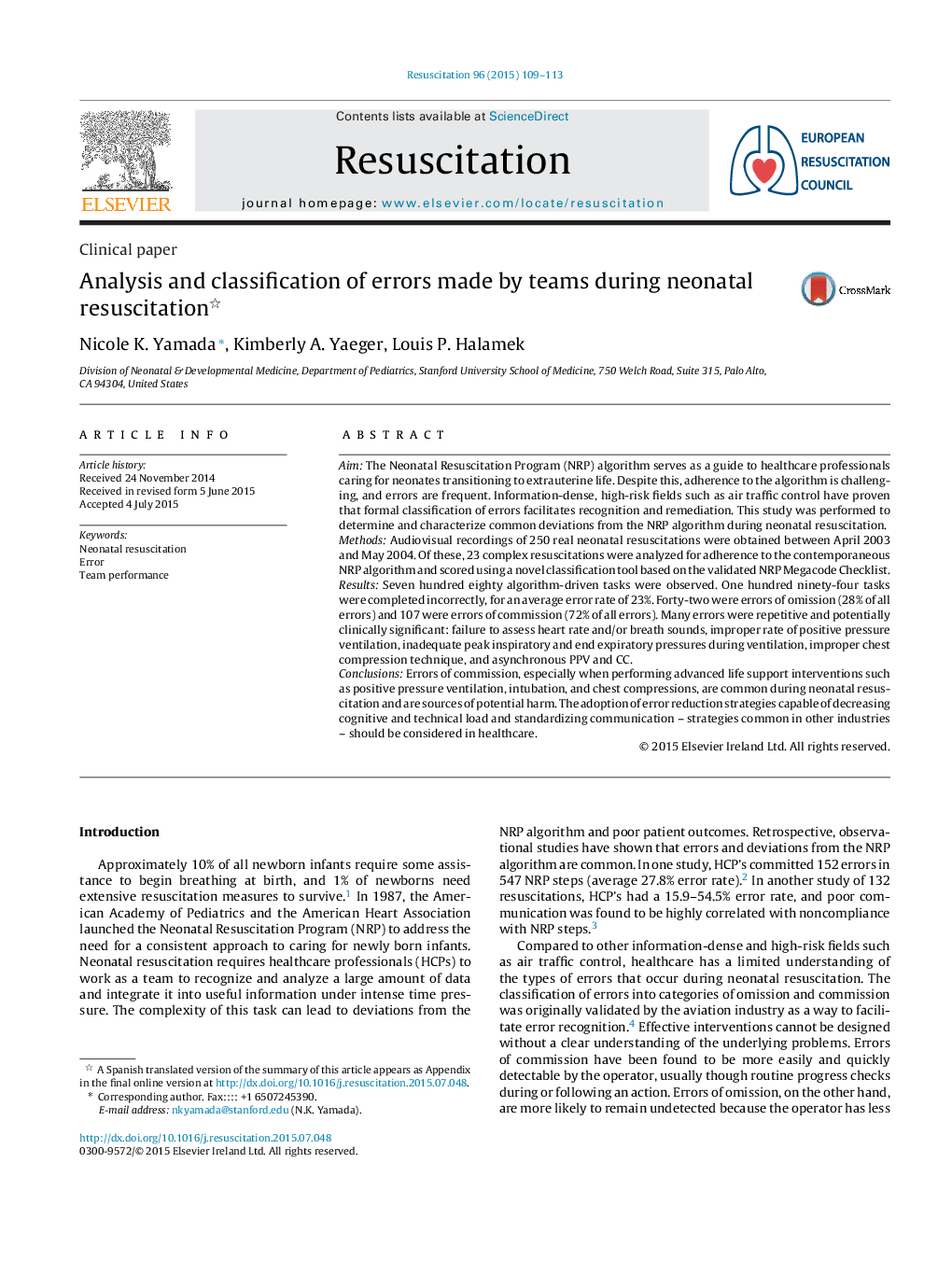| Article ID | Journal | Published Year | Pages | File Type |
|---|---|---|---|---|
| 5997486 | Resuscitation | 2015 | 5 Pages |
AimThe Neonatal Resuscitation Program (NRP) algorithm serves as a guide to healthcare professionals caring for neonates transitioning to extrauterine life. Despite this, adherence to the algorithm is challenging, and errors are frequent. Information-dense, high-risk fields such as air traffic control have proven that formal classification of errors facilitates recognition and remediation. This study was performed to determine and characterize common deviations from the NRP algorithm during neonatal resuscitation.MethodsAudiovisual recordings of 250 real neonatal resuscitations were obtained between April 2003 and May 2004. Of these, 23 complex resuscitations were analyzed for adherence to the contemporaneous NRP algorithm and scored using a novel classification tool based on the validated NRP Megacode Checklist.ResultsSeven hundred eighty algorithm-driven tasks were observed. One hundred ninety-four tasks were completed incorrectly, for an average error rate of 23%. Forty-two were errors of omission (28% of all errors) and 107 were errors of commission (72% of all errors). Many errors were repetitive and potentially clinically significant: failure to assess heart rate and/or breath sounds, improper rate of positive pressure ventilation, inadequate peak inspiratory and end expiratory pressures during ventilation, improper chest compression technique, and asynchronous PPV and CC.ConclusionsErrors of commission, especially when performing advanced life support interventions such as positive pressure ventilation, intubation, and chest compressions, are common during neonatal resuscitation and are sources of potential harm. The adoption of error reduction strategies capable of decreasing cognitive and technical load and standardizing communication - strategies common in other industries - should be considered in healthcare.
